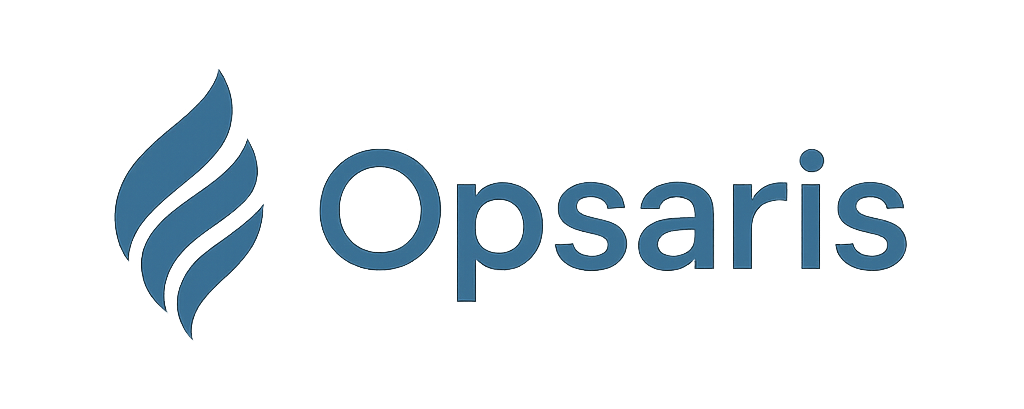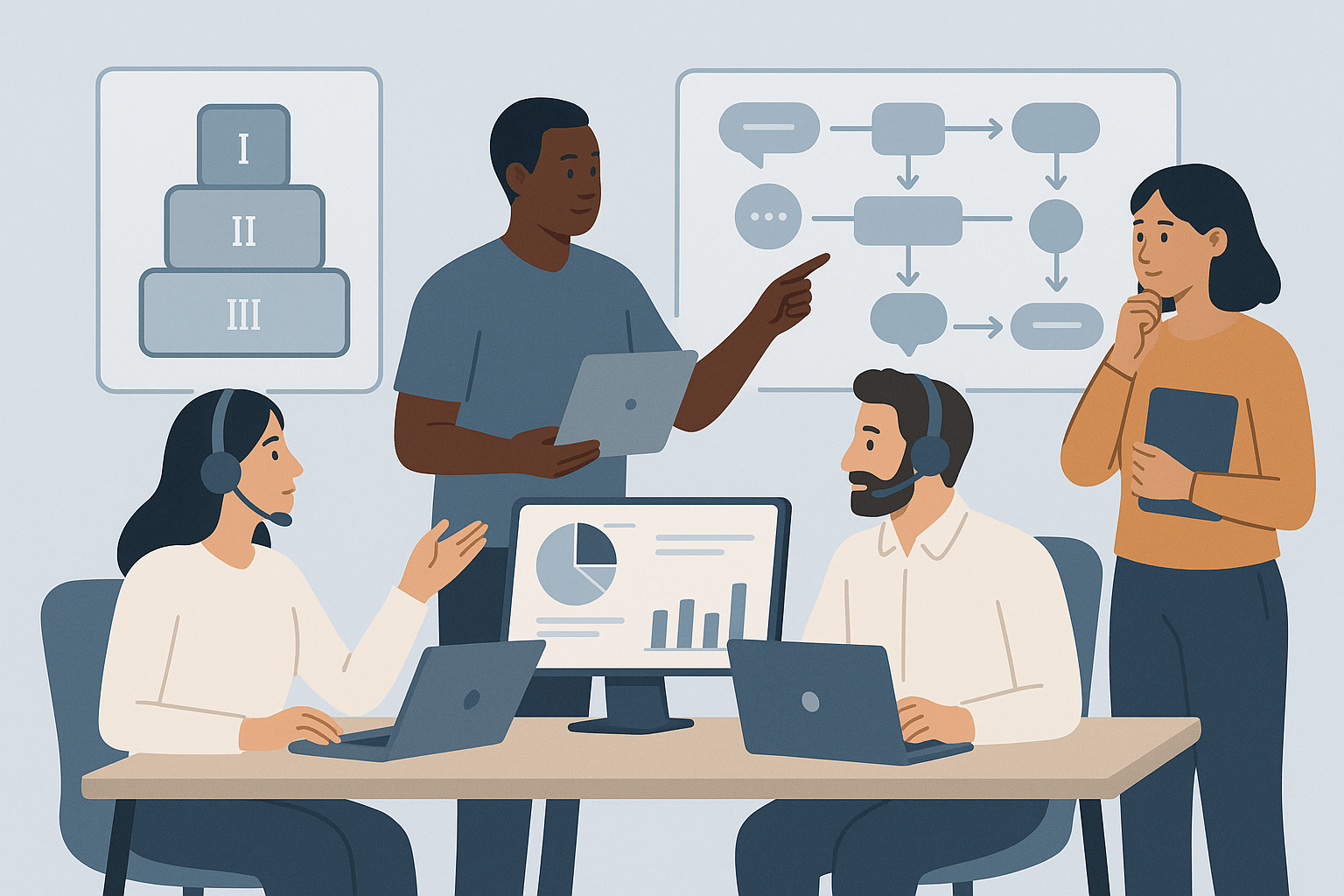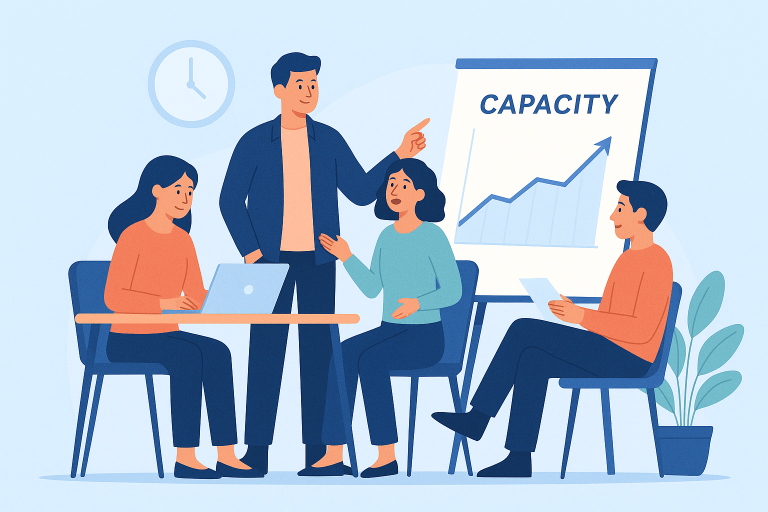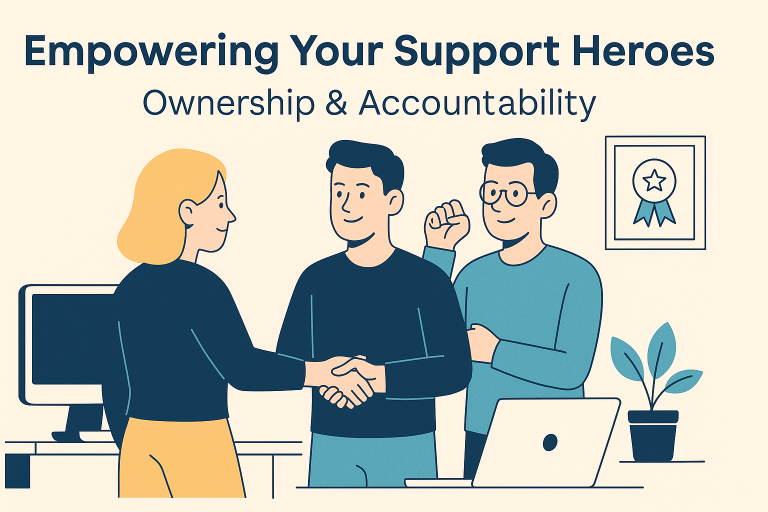The Tiered Support Model: How to Structure Your Support Team for Flow and Escalation
When every issue lands on the same desk, things slow down. The tiered support model solves this by distributing responsibility, creating clearer escalation paths, and improving resolution speed — but only if it’s designed with care.
In this guide, we’ll explain what a tiered support model is, when to use one, and how to structure it to improve your support flow — without falling into the trap of rigid handoffs or ticket ping-pong.
What Is the Tiered Support Model?
The tiered support model structures your team into levels based on responsibility and expertise, typically broken down into:
- Tier 1: Frontline support agents who handle high-volume, low-complexity issues (password resets, FAQs, basic troubleshooting).
- Tier 2: More experienced team members who investigate escalated tickets, perform deeper analysis, and liaise with internal teams.
- Tier 3: Engineers or product specialists who resolve complex, technical issues and perform root cause analysis.
This model allows for scalable support operations by ensuring each issue is handled at the appropriate level — without overwhelming any one part of the team.
Why Use a Tiered Support Model?
Benefits:
- Improved resolution times for high-volume issues
- Clear escalation paths and responsibilities
- Better alignment between support and product teams
- Increased team scalability without sacrificing quality
Risks (and how to avoid them):
- Silos or bouncebacks if tiers aren’t clearly defined
- Delays if escalations lack context or visibility
- Burnout in Tier 2 or 3 if Tier 1 isn’t empowered
The key is not just structuring your tiers — it’s supporting them with clear processes, feedback loops, and ownership.
Is Your Team Ready for a Tiered Structure?
Here are signs that your current setup might benefit from a tiered model:
- Senior agents are frequently pulled into routine tickets
- Issues regularly bounce between people with no clear ownership
- There’s no clear process for escalating complex cases
- Customer experience is suffering from inconsistent follow-up
- You’ve grown beyond a small team of generalists
A tiered support structure creates focus, flow, and accountability — especially when paired with metrics and tools that help you measure and improve.
Best Practices for Building a Tiered Support Team
1. Define clear ownership
Start with a simple responsibility matrix. Make sure agents know what they own, and when to escalate.
2. Design a lightweight escalation flow
Use a visual checklist or flowchart to reduce decision fatigue. Our Support Escalation Process template is built exactly for this.
3. Capture skills across the team
Don’t guess — use a Skills Matrix to map strengths and plan training. Check out our Support Ops Toolkit to start building up your own matrix.
4. Make escalation context-rich
Escalated tickets should include steps already taken, replication details, and internal notes. This reduces time spent repeating work.
5. Use feedback loops from Tier 3 to Tier 1
Turn complex resolutions into documented knowledge or short internal debriefs. This is how Tier 1 agents improve over time.
Common Pitfalls and How to Avoid Them
| Pitfall | Prevention |
|---|---|
| Over-complicating the model | Start small — even one clear escalation path is a win |
| Assuming experience = higher tier | Use skills, not titles, to guide your structure |
| No escalation data | Track bouncebacks, unresolved handovers, and time-to-resolution |
| No training or documentation | Close the loop by building internal KBs and SOPs from Tier 2/3 learnings |
Where the Tiered Model Connects to Support Maturity
Structuring your team is only part of the picture. To mature your operations, you’ll need:
- A clear Escalation Map
- A Skills Matrix to identify gaps
- SLA tracking to measure flow and identify friction
- A roadmap for continual improvement
All of these are included in the Opsaris Support Ops Toolkit — built for support leads scaling their team beyond firefighting.
Further Reading
External Resource:
Zendesk: Tiered Support Model Explained







